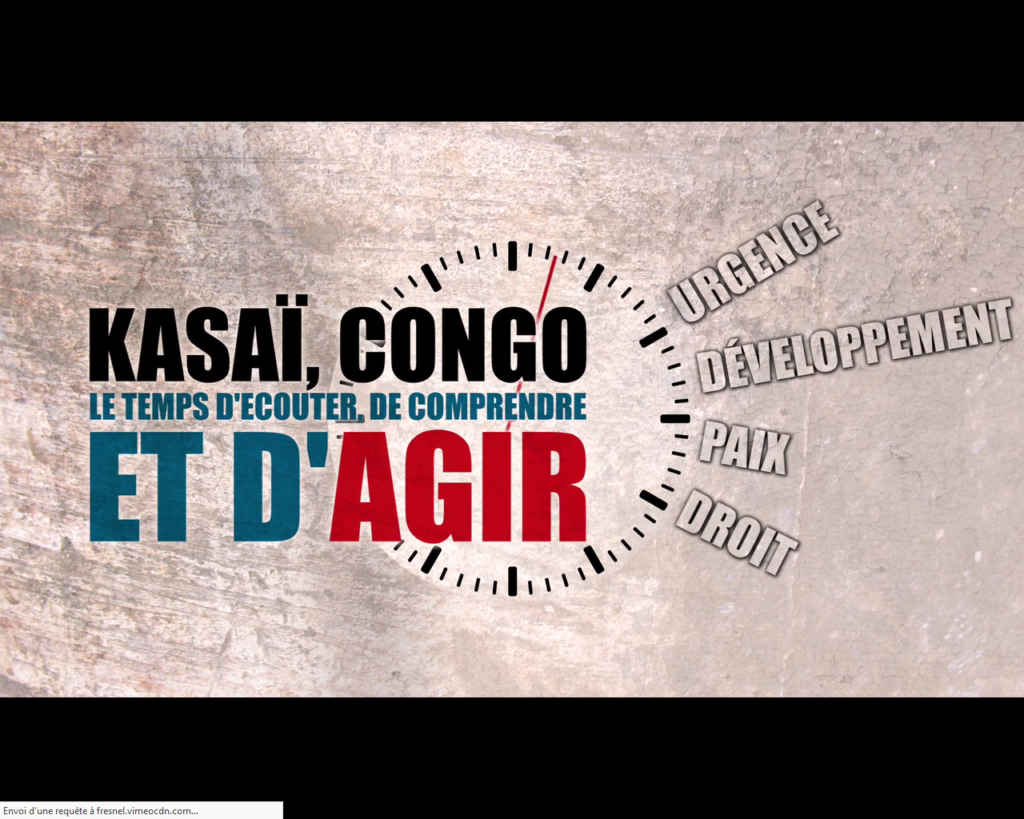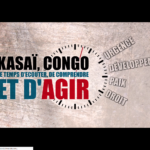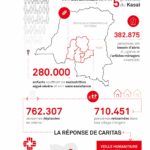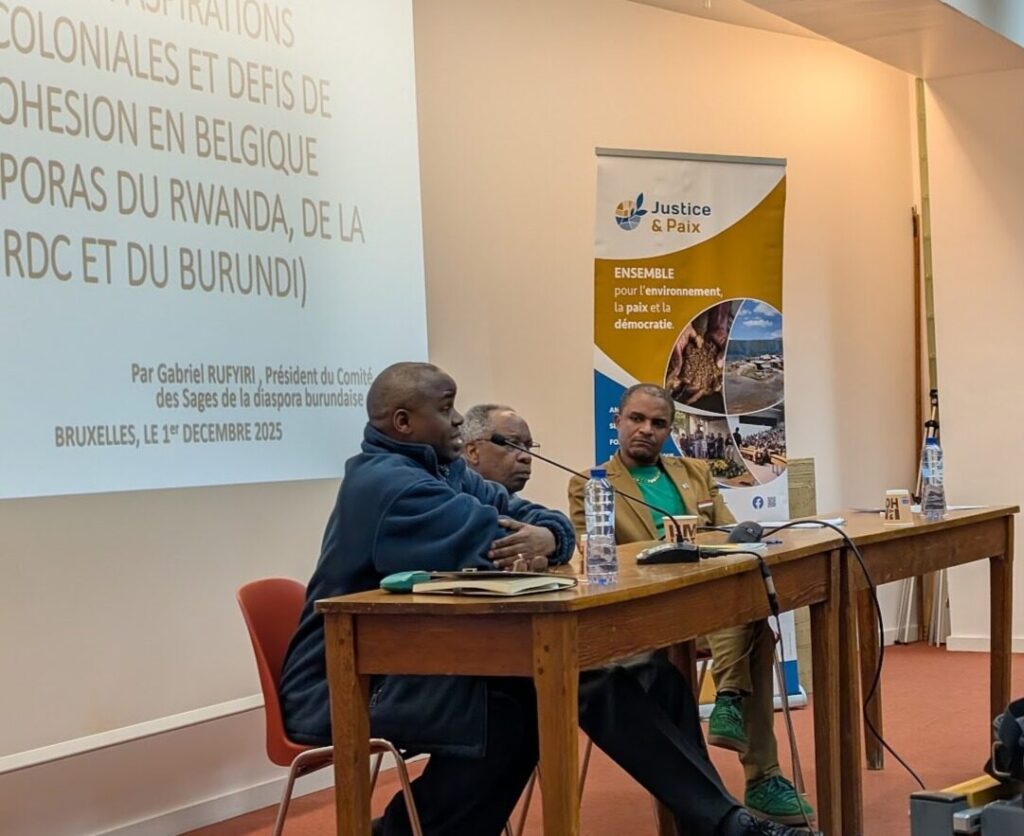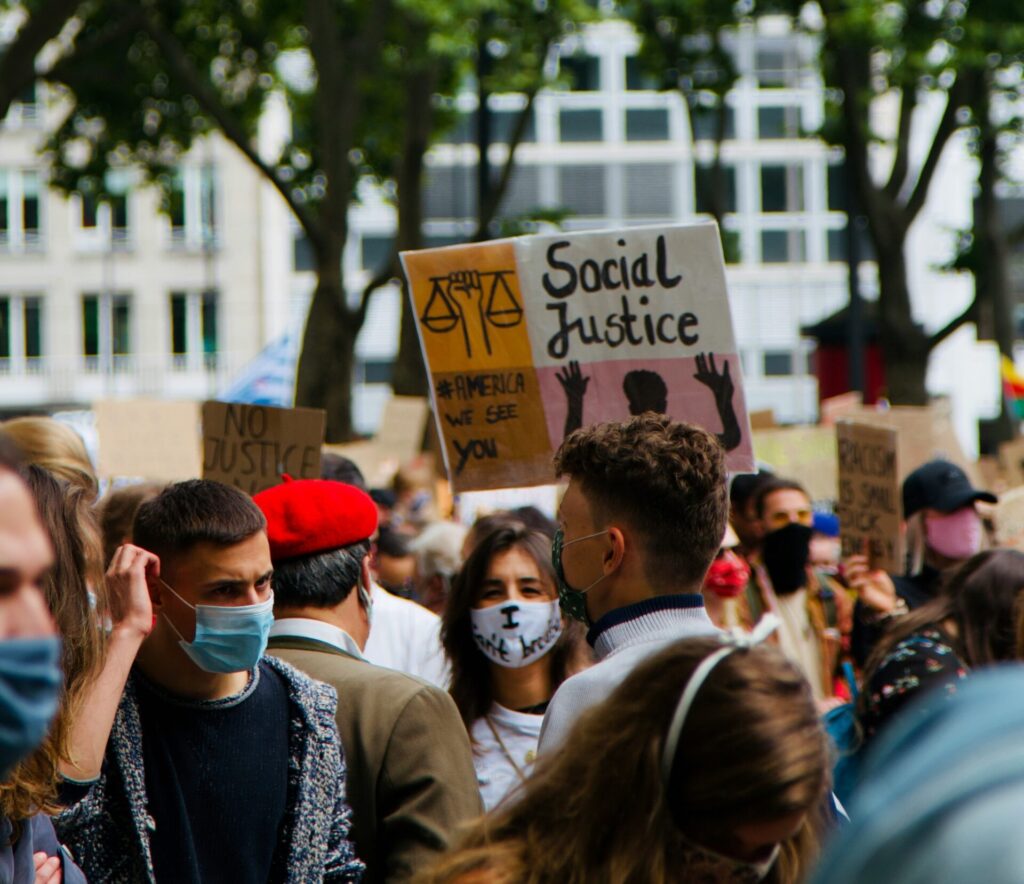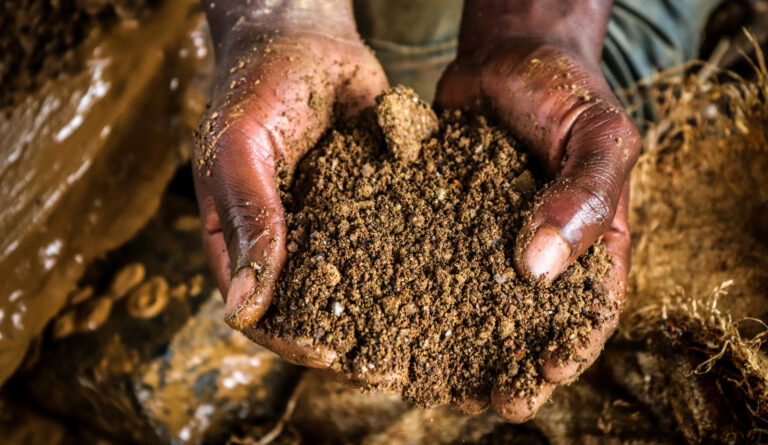The crisis that has been affecting the Greater Kasai region for more than a year has had dramatic consequences on the populations: more than 1.5 million people have been displaced and 35,000 people have taken refuge in neighboring Angola. This crisis, although it is rooted in specific local tensions, seems to catalyze several dynamics which are affecting the country as a whole today.

 Facing these protagonists, another militia gradually appears until it becomes part of the conflict. [4]United Nations report, August 2017, point 14. : THE " Bana Mura ". This militia is made up of individuals of ethnic origins tchokwe, hangs And tetela. The appearance of this new actor highlights the ethnic dimension of the Kasai crisis from April 2017. The Bana Mura would have been formed on the basis of their ethnicity, and their pro-government position [5]United Nations report, August 2017, points 35 to 50.. If the Kamuina Nsapu attack state agents with rare violence, the Buna Mura attack the Luba and Lulua populations directly. They also participate in the destruction of villages, pillaging and burning in their path. Living in a region hitherto spared from the conflicts shaking up the DR Congo, the Kasaïan populations were shocked by the virulence of the attacks, the trivialization and generalization of this unprecedented violence. In a few months, more than 3,000 deaths were recorded by the parishes of this landlocked territory, 10 times the size of Belgium. This crisis quickly had dramatic consequences for the population and these will continue to be felt for a long time. According to UNICEF, more than 400.000 Children in the region are severely malnourished and at risk of death.
CUSTOMARY AUTHORITY VS NATIONAL AUTHORITY: decentralization in question
The events described above can be part of the more global reflection on the organization of power in DR Congo. What is in fact emerging in the background of this particular situation in Kasai is a dichotomy between, on the one hand, the customary authority of local authorities and on the other hand, the concentration of strong power in the hands of central authorities. The desire to bring those who govern closer to those who are governed led to the inclusion of the principle of decentralization in the 2006 Congolese Constitution. It is planned that the State will be subdivided into 25 provinces to which the city of Kinshasa will be added. However, since 2006 no progress has been made in this direction. It was in January 2015 that the national authorities finally approved the bill which ratified the new borders of the 26 provinces. But were the authorities really ready to grant more power to provincial authorities? The skills of each entity are clearly defined and specific to them. There is therefore no a priori encroachment of skills to be feared. The animosity aroused by this reform must therefore find its explanation elsewhere. Behind this reform, we can in fact read a clear desire to politicize customary leaders, desired by the central power to establish within this region, considered a historic bastion of the opposition, relays of presidential messages and to implement places strategic support in the region. The hasty redistribution of the provinces in 2015 had aroused the mistrust of the opposition which accused Kinshasa of wanting to reorganize the province in such a way as to optimize the distribution of the ethnic groups present to its advantage with a view to the upcoming elections - and in particular the Luba who are mostly rallied to the opposition.
Rather than a frank opposition between these two levels of power, we can see in the decentralization process a complementarity of the latter, as a solution to compensate for the governance shortcomings of the central State. Thus, beyond the stabilization and community reconciliation efforts to be carried out following the recent conflict, it is important for the future of the region to enshrine the decentralization process with respect for customary authority. This mode of governance was chosen by the Congolese who enshrined it in their Constitution. It is also necessary to overcome the antagonisms brutally revealed by the crisis, by identifying points of convergence towards common and shared interests between central and local authorities.
Facing these protagonists, another militia gradually appears until it becomes part of the conflict. [4]United Nations report, August 2017, point 14. : THE " Bana Mura ". This militia is made up of individuals of ethnic origins tchokwe, hangs And tetela. The appearance of this new actor highlights the ethnic dimension of the Kasai crisis from April 2017. The Bana Mura would have been formed on the basis of their ethnicity, and their pro-government position [5]United Nations report, August 2017, points 35 to 50.. If the Kamuina Nsapu attack state agents with rare violence, the Buna Mura attack the Luba and Lulua populations directly. They also participate in the destruction of villages, pillaging and burning in their path. Living in a region hitherto spared from the conflicts shaking up the DR Congo, the Kasaïan populations were shocked by the virulence of the attacks, the trivialization and generalization of this unprecedented violence. In a few months, more than 3,000 deaths were recorded by the parishes of this landlocked territory, 10 times the size of Belgium. This crisis quickly had dramatic consequences for the population and these will continue to be felt for a long time. According to UNICEF, more than 400.000 Children in the region are severely malnourished and at risk of death.
CUSTOMARY AUTHORITY VS NATIONAL AUTHORITY: decentralization in question
The events described above can be part of the more global reflection on the organization of power in DR Congo. What is in fact emerging in the background of this particular situation in Kasai is a dichotomy between, on the one hand, the customary authority of local authorities and on the other hand, the concentration of strong power in the hands of central authorities. The desire to bring those who govern closer to those who are governed led to the inclusion of the principle of decentralization in the 2006 Congolese Constitution. It is planned that the State will be subdivided into 25 provinces to which the city of Kinshasa will be added. However, since 2006 no progress has been made in this direction. It was in January 2015 that the national authorities finally approved the bill which ratified the new borders of the 26 provinces. But were the authorities really ready to grant more power to provincial authorities? The skills of each entity are clearly defined and specific to them. There is therefore no a priori encroachment of skills to be feared. The animosity aroused by this reform must therefore find its explanation elsewhere. Behind this reform, we can in fact read a clear desire to politicize customary leaders, desired by the central power to establish within this region, considered a historic bastion of the opposition, relays of presidential messages and to implement places strategic support in the region. The hasty redistribution of the provinces in 2015 had aroused the mistrust of the opposition which accused Kinshasa of wanting to reorganize the province in such a way as to optimize the distribution of the ethnic groups present to its advantage with a view to the upcoming elections - and in particular the Luba who are mostly rallied to the opposition.
Rather than a frank opposition between these two levels of power, we can see in the decentralization process a complementarity of the latter, as a solution to compensate for the governance shortcomings of the central State. Thus, beyond the stabilization and community reconciliation efforts to be carried out following the recent conflict, it is important for the future of the region to enshrine the decentralization process with respect for customary authority. This mode of governance was chosen by the Congolese who enshrined it in their Constitution. It is also necessary to overcome the antagonisms brutally revealed by the crisis, by identifying points of convergence towards common and shared interests between central and local authorities.
Attachments
Notes[+]
| ↑1 | Place where initiation rituals take place. |
|---|---|
| ↑2 | Among these deaths, we find members of the Armed Forces of DR Congo (FARDC), Congolese National Police (PNC), National Intelligence Agency (ANR), agents of the General Directorate of Migration (DGM) and officials of the Independent National Electoral Commission (CENI). |
| ↑3 | United Nations report, August 2017, points 51 to 62. |
| ↑4 | United Nations report, August 2017, point 14. |
| ↑5 | United Nations report, August 2017, points 35 to 50. |
| ↑6 | The period between the end of reserves from the previous harvest and the availability of products from the following harvest is called the “hunger gap”. |
| ↑7 | MIBA (Bakwanga Mining) is a diamond producing company. The SNCC (Société Nationale des Chemins de fer du Congo) allowed the transportation of the goods. |
| ↑8 | See on this subject theanalysis of the Justice and Peace Commission on the elections, December 2017. |
| ↑9 | On December 11, 2017, 15 MONUSCO peacekeepers were killed and more than 50 others injured during an armed attack in one of their bases in Semuliki (North Kivu) – Source: The world |
| ↑10 | The UDPS is one of the main opposition parties. |
| ↑11 | See on this subject theanalysis of the Justice and Peace Commission on the elections, December 2017. |
| ↑12 | We think, for example, of the conflict in Ecuador in 2010-2011 which had its origins in a fishing issue and which created more than 200,000 refugees, but also more recently in Tanganyika, the Kivus... |
